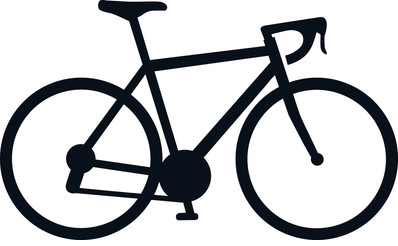The Four Types of Cyclists
Originally developed by Roger Geller at the City of Portland, OR, the "Four Types
of Bicyclists" are meant to guide efforts in assessing — in broad terms — what
certain segments of a population require or want in a bikeway facility. Geller
suggested that Portland's population could be categorized into the following four
groups:
"The Geller typology classifies all people into types on the basis of their willingness to
consider riding a bicycle (e.g., those in the no way, no how group
will not consider riding a bicycle at all). Members of the other three
groups are broken down by their comfort with riding on different
types of facilities, regardless of whether or how often they currently
ride. One strength of this approach is that it provides insight into
the potential ridership market and not only into current bicyclists.
Among the other bicyclist typologies that have been proposed are
those that include categories for all people, including noncyclists
and several other groups of different cyclists. Another typology
approach is to limit the classification to people that ride bicycles and
to exclude noncyclists in the breakdown." (1)

-
Strong and Fearless: People willing to bicycle with limited or no
bicycle-specific infrastructure. Strong and fearless cyclists do not need any accommodation
in the form of bicycle-
specific infrastructure to ride comfortably, even on busy streets. About 4% of the population.
-
Enthused and Confident: People willing to bicycle if some bicycle-specific
infrastructure is in place. Enthused and confident cyclists are in general comfortable to ride
on streets with motor vehicles, but "prefer to do so operating oheir own facilities," such as a
bike lane. 9% of the population is enthused and confident.
-
Interested but Concerned: People willing to bicycle if high-quality
bicycle infrastructure is in place. The interested but concerned want to ride a bicycle, or are
at least "curious about bicycling," but generally require comfortable facilities and will not
want to ride on streets with heavy motor vehicle traffic. 56% of the population falls into this
category.
-
No Way, No How: People unwilling to bicycle even if high-quality bicycle
infrastructure is in place. The no way, no how group will not ride a bicycle no matter the
street conditions, because of an inability, a lack of interest, or other factor. 31% of the
people will never ride a bicycle.
Level of Traffic Stress
- LTS 1: Strong separation from all except low speed, low volume traffic. Simple-to-use crossings. LTS 1 indicates a facility suitable for children.
- LTS 2: Except in low speed / low volume traffic situations, cyclists have their own place to ride that keeps them from having to interact with traffic except at formal crossings.
- LTS 3: Involves interaction with moderate speed or multilane traffic, or close proximity to higher speed traffic. A level of traffic stress acceptable to the "enthused and confident."
- LTS 4: Involves being forced to mix with moderate speed traffic or close proximity to high speed traffic. A level of stress acceptable only to the "strong and fearless."
Dill, Jennifer, and Nathan McNeil. "Revisiting the four types of cyclists: Findings from a national survey."
Transportation research record 2587.1 (2016): 90-99.
